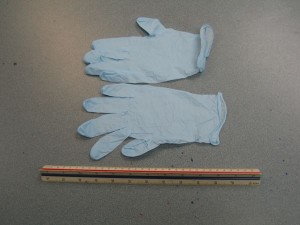The tenets of standard precaution are that all
patients are either colonized of infected with microorganisms despite the absence or presence of clinical signs and symptoms, and that a uniform level of caution should be used in the care for all patients regardless of the presenting manifestations of any disease condition.
The elements of standard precaution include hand hygiene, use of gloves and other barriers (mask, eye protection, face shield, and gown), proper handling of patient care equipment and linen, environment control, prevention of injury from sharps, and patient placement (room assignment) within the health care facility. All these precautionary measures are basically used as the first line of defense by hospital personnel in the prevention of the hospital acquired infections.
Hand washing as the most basic form of standard precautions
The most frequent case of infection outbreaks in health care institutions is transmission of disease causing microorganisms by the hands of health care workers, especially when dealing with numerous numbers patients. Standard precautions of hand washing and proper use of gloves are very basic and essential practices common to all health institutions around the world. Hands should be washed or decontaminated frequently every before and after patient care. When hands are visibly dirty or contaminated with biologic material following patient care, hands should be washed with soap and water. If hands are not visibly soiled, health care providers can use alcohol-based, waterless antiseptic agents for routine hand decontamination. Hand washing or disinfection reduces the bacterial load and greatly decreases the risk of transfer to other patients.
Standard precautions for proper use of Gloves as an effective barrier against communicable diseases
Gloves provide the best standard precaution for the hands from microflora associated with patient care. Gloves should be worn when a health care worker has contact with any patient’s secretions or excretions and must be properly discarded after each patient care contact. Because microbial organisms colonizing health care workers’ hands can exponentially proliferate in warm, moist environment provided with gloves, hands should therefore be thoroughly washed with soap and water after gloves are removed. Nurses in general should be active advocates in promoting hand washing and glove use by other hospital workers such as auxiliary hospital personnel, technicians, laboratory personnel and other allied health personnel who at one point will come in contact with patients for certain clinical procedures.
Standard precautions for needle stick prevention
The most important aspect of reducing the risk of blood borne infection is

avoidance of percutaneous injury. Extreme care is very essential in all situations in which needles, scalpels and other sharp objects are being handled and disposed. Used needles should never be recapped, instead, they should be placed directly into puncture resistant containers near the place where they are most often used such as where medication preparation is usually done. If a situation dictates that a needle must be recapped, the nurse must have within him/her an appropriate mechanical device to hold the cap or use the one handed recapping method to decrease the likelihood of skin puncture. A careful and proper observance of this crucial and indispensable standard precaution can significantly decrease the likelihood infection from spreading.
